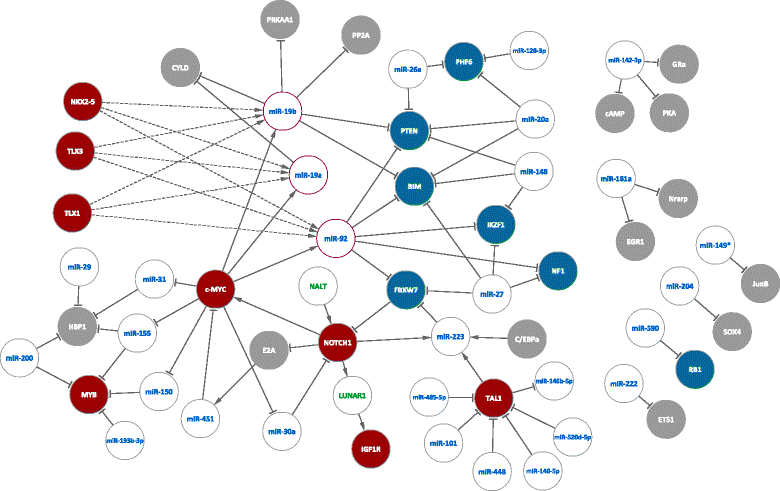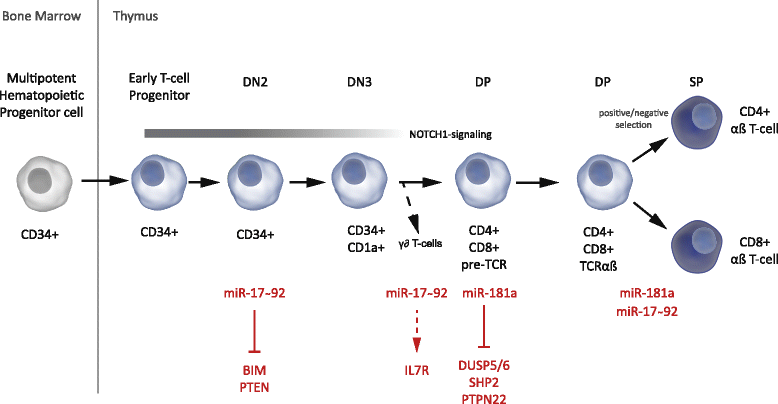T-ALL and thymocytes: a message of noncoding RNAs
- PMID: 28270163
- PMCID: PMC5341419
- DOI: 10.1186/s13045-017-0432-0
T-ALL and thymocytes: a message of noncoding RNAs
Abstract
In the last decade, the role for noncoding RNAs in disease was clearly established, starting with microRNAs and later expanded towards long noncoding RNAs. This was also the case for T cell acute lymphoblastic leukemia, which is a malignant blood disorder arising from oncogenic events during normal T cell development in the thymus. By studying the transcriptomic profile of protein-coding genes, several oncogenic events leading to T cell acute lymphoblastic leukemia (T-ALL) could be identified. In recent years, it became apparent that several of these oncogenes function via microRNAs and long noncoding RNAs. In this review, we give a detailed overview of the studies that describe the noncoding RNAome in T-ALL oncogenesis and normal T cell development.
Keywords: LncRNA; MicroRNA; T-ALL; Thymocytes.
Figures


References
Publication types
MeSH terms
Substances
LinkOut - more resources
Full Text Sources
Other Literature Sources

